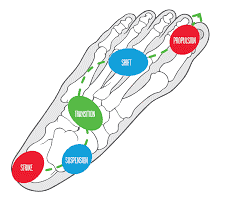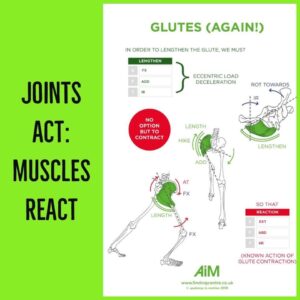Download this free report & change your posture for the better in matter of minutes.
Learn to love the way you move!
“Anatomy in Motion is a movement oriented education system. It is based on what the body does and when it does it. What I mean by that is what joints do, in what dimension of movement and in what time, for instance in our gait cycle”
— Gary Ward creator of Anatomy in Motion
The AiM method of assessment and treatment is a movement based approach for helping you move with ease and feel better in your body. It is based around the phases of the gait cycle (walking), which makes sense, as we are moving people.
We are born with a blueprint of good movement . As we navigate through life we have small injuries, niggles, undesirable sustained positions that lead our bodies to compensate. These compensations change how we move and can be conscious or sub conscious. Over time these changes can lead to unpleasant symptoms or loss of movement. This then leads us to seek help as our body no longer feels good, we experience pain and can no longer do what we want.
*
A healthy body has many options to chose from when it comes to movement. A happy body can squat in many different ways for example. When these options are removed , our movement choices become more limited and this leads to further injury, discomfort and pain.
As with most things in life, we exist on a spectrum, and this is no different with movement. Our joints move from closed to open, our muscles from lengthened to shortened and all in a response to gravity ground reaction forces. This range of motion passes through centre. We can lose our perception of centre as a result of movement compensations, and this limits our spectrum and options for movement choice.
The flow motion model which forms the basis of the AiM training gives us a system to assess the body in motion. What is moving, and more importantly, what isn’t.
We assess the body, looking at the joints and how they move in 3d and also how they relate to each other in motion with range and timing.
We are designed to move, and since we evolved onto 2 legs get from A to B by walking, it makes sense to study how the joints move and their timing through the cycle of gait.
*
In your assessment we will view the body in standing, as this shows up many of the compensations of the body as we organise ourselves against gravity.
We then view the body in motion to review the timing and range of the joints and how they respond to each other.
We then need to ask the essential question … what is missing ? What movement has been removed by the brain in response to something that happened in your past.
Our treatment goal is to feed this movement back into the body so we can have more options once again for healthy movement.

The flow motion approach to assessment and treatment will form part of every session both in the clinic, in the corrective exercise sessions and in the rehab classes.
For more information on this approach please click the link https://findingcentre.co.uk/